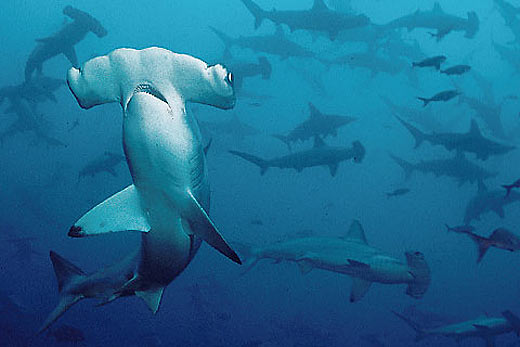1. Has the "Shark Enemy of the Year" Turned Conservationist?
 A few weeks ago, Sea Save Foundation and a number of other organizations named Costa Rican President Luis Guillermo Solis the "Shark Enemy of the Year". This week, the ocean conservation group MarViva announced the Solis is in support of including more species in the Memorandum of Understanding (MoU) on the Convention of Migratory Sharks. The following shark species should be added: silky, great hammerhead, hammerhead, and fox sharks. Read more...
A few weeks ago, Sea Save Foundation and a number of other organizations named Costa Rican President Luis Guillermo Solis the "Shark Enemy of the Year". This week, the ocean conservation group MarViva announced the Solis is in support of including more species in the Memorandum of Understanding (MoU) on the Convention of Migratory Sharks. The following shark species should be added: silky, great hammerhead, hammerhead, and fox sharks. Read more...
-----------------------------------------------
2. Warming Ocean May Bring Major Changes for US Northeast Fish Species
This week, an article was published in PLOS One that revealed the NOAA studies of just how vulnerable US marine fish and invertebrate species are to climate change. The study reviewed the potential impact of 82 different species. According to Jon hare, a fisheries oceanographer at NOAA Fisheries' Northeast Fisheries Science Center (NEFSC), "our method identifies specific attributed that influence marine fish and invertebrate resilience to the effects of a warming ocean and characterizes risks posed to individual species". Each species was evaluated and ranged in one of the four vulnerability categories: low, moderate, high, and very high. After reviewing the data, animals that live on the ocean bottom and animals that migrate between fresh and salt water are the most vulnerable to climate change effects. Read more...
-----------------------------------------------
3. In the Southern Ocean, a Carbon-Dioxide Mystery Comes Clear
After years of mystery around the reasons why levels of greenhouse gas were so low twenty thousand years ago. New research shows that carbon dioxide was dissolved in the deep Southern Ocean at times when the levels in the atmosphere were low. The study also reveals that the Southern Ocean carried smaller amounts of oxygen than today which indicates that phytoplankton were taking up large amounts of carbon dioxide near the surface. The team also discusses the variations in carbon-dioxide storage which created a number of natural "wobbles" in atmospheric levels. To read the scientific paper in Nature, click here...
-----------------------------------------------
4. Outrage Swells After Sport Fishermen Kills 1,379-Pound Tiger Shark

This week, fishermen in Australia reeled in and killed a nearly 1,400 pound tiger shark. Controversy has arisen around this capture and trophy hunting. This case is being compared to the international news story of Amercian dentist Walter Palmer killing a beloved lion, Cecil. According to Jennifer Schmidt, director of genetic studies at the Shark Research Institute, " big, mature animals should be breeding; it takes a long time for the bigger sharks to mature- depending on the species 10, 15, 20 year before they're able to breed". Killing a shark of this size and age will, upon additional factors, continue to make it impossible to replenish tiger shark populations Read more...
-----------------------------------------------
5. See Rare Drone Footage of Blue Whale Mom and Calf
-----------------------------------------------
Be sure to "LIKE" http://facebook.com/SeaSave to ensure our "Week in Review" is delivered to your newsfeed every Thursday.
Sea Save Foundation is committed to raising awareness of marine conservation. The Week in Review is a team effort produced by the Sea Save staff to provide a weekly summary of the latest in marine research, policy, and news.